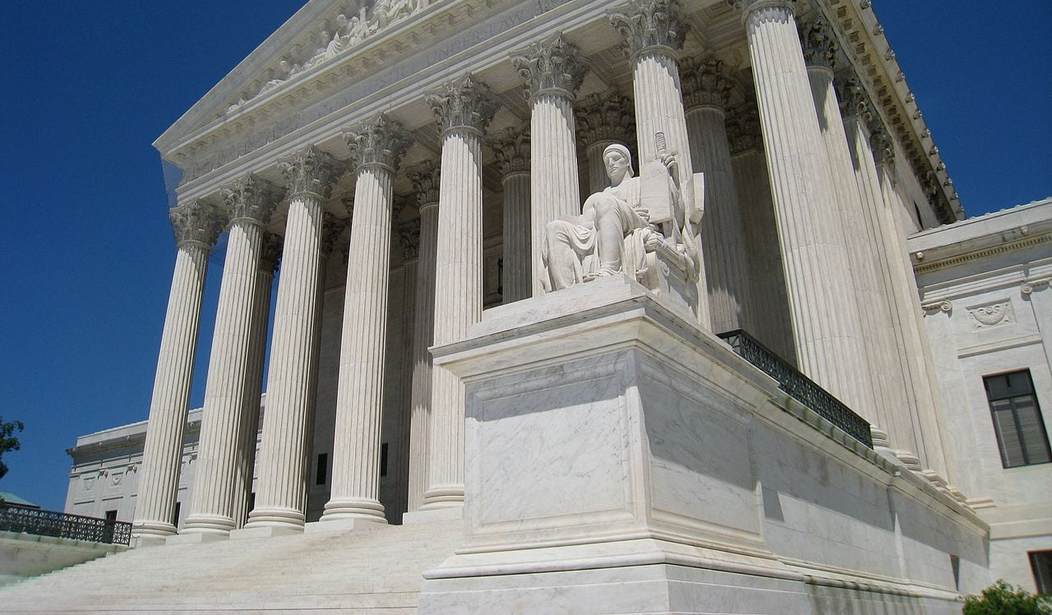On Thursday, Attorney General Lynn Fitch (R-Miss.) urged the Supreme Court to strike down its abortion precedents in Roe v. Wade (1973) and Planned Parenthood v. Casey (1992). Fitch called Roe and Casey “egregiously wrong,” poisonous to America’s public discourse, and “decades out of date” because its assumptions about women’s freedom and the development of unborn babies in the womb have proven false. Most importantly, Fitch reiterated the central argument against Roe — it invented a “right” to abortion that does not exist in the Constitution.
“Because nothing in constitutional text, structure, history, or tradition supports a right to abortion,” Fitch argued, “a prohibition on elective abortions is therefore constitutional if it satisfies the rational-basis review that applies to all laws.”
Fitch made these important arguments in her brief in the central abortion case Thomas Dobbs v. Jackson Women’s Health, which the Supreme Court will hear when it reconvenes this fall. The case involves a Mississippi law that bans abortion after 15 weeks gestation, at which point an unborn baby already has a fully formed nose and lips, eyelids and eyebrows.
Recommended: Supreme Court Abortion Case May Reverse a Key Aspect of Roe v. Wade
As Fitch noted in her brief, the Mississippi Legislature found that at 5-6 weeks’ gestation, “an unborn human being’s heart begins beating,” while at about 8 weeks’ gestation, he or she “begins to move about in the womb.” At 9 weeks, “all basic physiological functions are present,” as are teeth, eyes, and external genitalia. At 10 weeks, “vital organs begin to function,” and hair, fingernails, and toenails begin to form. At 11 weeks, an unborn baby’s diaphragm is developing, and he or she may hiccup. At 12 weeks, he or she can open and close fingers, starts to make sucking motions, and senses stimulation from the world outside the womb.” By 15 weeks, the unborn baby “has taken on the human form in all relevant respects.”
Yet, according to the precedents set by Roe and Casey, states like Mississippi cannot protect this human life because the Court has ruled that 15-week-old babies have not reached the point of viability outside the womb. Fitch argued that the Court should reject this standard, partially because the Court’s recent abortion jurisprudence is “egregiously wrong.”
“Roe and Casey are egregiously wrong. The conclusion that abortion is a constitutional right has no basis in text, structure, history, or tradition,” Fitch claimed. “Roe based a right to abortion on decisions protecting aspects of privacy under the Due Process Clause. But Roe broke from prior cases by invoking a general ‘right of privacy’ unmoored from the Constitution. Notably, Casey did not embrace Roe’s reasoning. And Casey’s de- fense of Roe’s result—based on the liberty this Court has afforded to certain ‘personal decisions,’—fails.”
“[A]bortion is fundamentally different from any right this Court has ever endorsed,” the attorney general explained. “No other right involves, as abortion does, ‘the purposeful termination of a potential life.’ So Roe broke from prior cases, Casey failed to rehabilitate it, and both recognize a right that has no basis in the Constitution.”
Recommended: Democrats Give Away the Game: They Want the Supreme Court to Unilaterally Amend the Constitution
Fitch explained that “the Constitution’s text says nothing about abortion” and that “nothing in the Constitution’s structure implies a right to abortion or prohibits States from restricting it.”
“Rather, history shows a long tradition—up to, at, and long after ratification of the Fourteenth Amendment—of States restricting abortion. At the end of 1849, 18 of the 30 States had statutes restricting abortion; by the end of 1864, 27 of the 36 States had them; and, at the end of 1868, the year the Fourteenth Amendment was ratified, 30 of the 37 States had such laws, as did 6 Territories,” she noted. “The public would have understood that, consistent with the Fourteenth Amendment, States could restrict abortion to pursue legitimate interests and could do so throughout pregnancy.”
The attorney general argued that, because the Constitution does not explicitly address the issue, the power to regulate abortion is “reserved to the States” under the Tenth Amendment.
Fitch did not just make the classic originalist argument against Roe and Casey, however. She also noted that these abortion cases “have inflicted significant damage.”
“Far from bringing peace to the controversy over abortion, Roe and Casey have made matters worse,” she noted, citing none other than the late Supreme Court Justice Ruth Bader Ginsburg, who wrote that “Heavy-handed judicial intervention [in Roe] was difficult to justify and appears to have provoked, not resolved, conflict.”
“Abortion caselaw is pervaded by special rules—the undue-burden standard, the large-fraction test, and more—that feed the perception that ‘when it comes to abortion’ this Court does not ‘evenhandedly apply’ the law,” Fitch explained. “Roe and Casey are unprincipled decisions that have damaged the democratic process, poisoned our national discourse, plagued the law—and, in doing so, harmed this Court.”
The attorney general also explained that “the march of progress has left Roe and Casey behind.”
“Those cases maintained that an unwanted pregnancy could doom women to ‘a distressful life and future,’ that abortion is a needed complement to contraception, Casey, and that viability marked a sensible point for when state interests in unborn life become compelling,” she noted. “Factual developments undercut those assessments.”
“Today, adoption is accessible and on a wide scale women attain both professional success and a rich family life, contraceptives are more available and effective, and scientific advances show that an unborn child has taken on the human form and features months before viability. States should be able to act on those developments. But Roe and Casey shackle States to a view of the facts that is decades out of date,” Fitch argued.
Casey upheld Roe in the name of protecting societal reliance interests. Yet Fitch argued that women do not need abortion to get ahead. “Innumerable women and mothers have reached the highest echelons of economic and social life independent of the right endorsed in those cases. Sweeping policy advances now promote women’s full pursuit of both career and family. And many States have al- ready accounted for Roe and Casey’s overruling.”
Importantly, the AG noted that “modern options regarding and views about childbearing have dulled concerns on which Roe rested.” For instance, “numerous laws enacted since Roe— addressing pregnancy discrimination, requiring leave time, assisting with childcare, and more—facilitate the ability of women to pursue both career success and a rich family life. And today all 50 States and the District of Columbia have enacted ‘safe haven’ laws, giving women bearing unwanted children the option of ‘leaving [the] newborn directly in the care of the state until it can be adopted.'”
In 1973, abortion may have seemed necessary for women’s advancement and it seemed less barbaric because embryology had not yet made the advances it has today. Now, however, abortion is less necessary for women’s well-being and advancement, and it also appears more barbaric.
Recommended: Blame the Left for Making the Supreme Court Too Political
The idea that the Constitution guarantees a “right” to abortion was always wrong, but these modern developments make it all the more imperative for the Supreme Court to overturn Roe v. Wade and Planned Parenthood v. Casey. With these cases overturned, states can again make their own laws on abortion, reclaiming the Tenth Amendment power of which the Court unjustly deprived them.
Given the fact that Justice Clarence Thomas is the most senior among the more conservative justices — Samuel Alito, Neil Gorsuch, Brett Kavanaugh, and Amy Coney Barrett — he may write the majority opinion in Dobbs v. Jackson Women’s Health. This case may make history by finally setting right the historic injustice of Roe v. Wade.









Join the conversation as a VIP Member